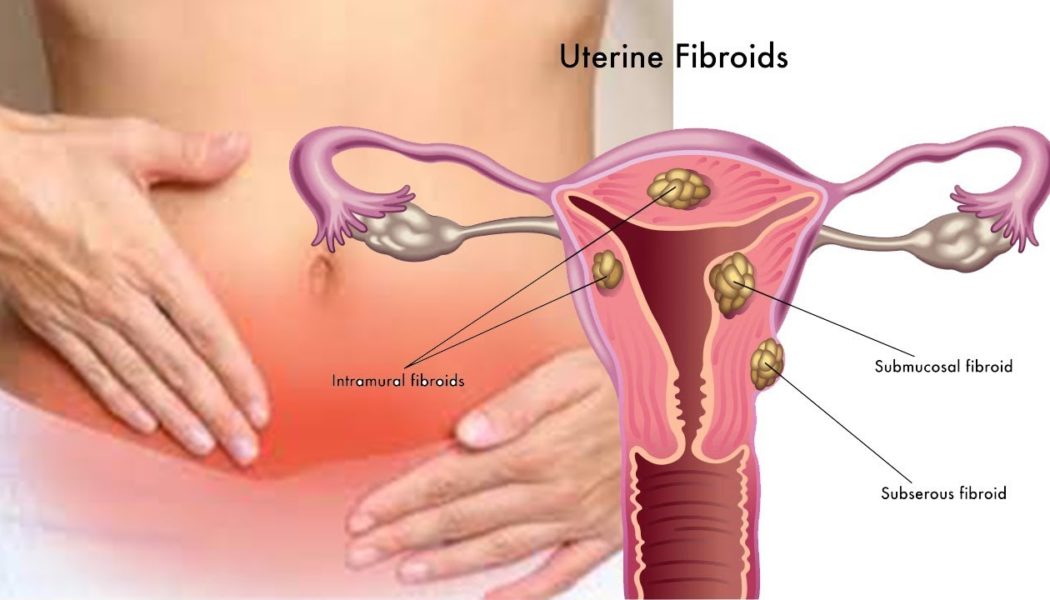Myomectomy in Bundang
Search and Compare the Best Clinics and Doctors at the Lowest Prices for Myomectomy in Bundang

Find the best clinics for Myomectomy in Bundang
No pricing info available
Mexico offers the best prices Worldwide
Price: $ 260
Miraeyeon OB/GYN & Fertility Clinic, located in Jeongja dong, Bundang, South Korea offers patients Myomectomy procedures among its total of 4 available procedures, across 4 different specialties. Currently, there's no pricing information for Myomectomy procedures at Miraeyeon OB/GYN & Fertility Clinic, as all prices are available on request only. All procedures and treatments are undertaken by just a small team of specialists, with 3 in total at the Clinic, and they are not accredited by any recognized accreditations institutes
- Home
- South Korea
- Bundang
WHY US?
At Medijump, we're making medical easy. You can search, compare, discuss, and book your medical all in one place. We open the door to the best medical providers worldwide, saving you time and energy along the way, and it's all for FREE, no hidden fees, and no price markups guaranteed. So what are you waiting for?

Free

Best Price

Widest Selection

Risk-Free
What you need to know about Myomectomy in Bundang

Myomectomy is a surgical procedure performed to remove Uterine fibroids – abnormal growths that appear in or on a woman’s uterus. You may undergo this procedure if you have any of the following symptoms: Heavy menstrual bleeding, Menstrual periods that last longer than a week, pelvic pressure or pain, frequent urination, etc.
What does a Myomectomy Procedure Involve?
There are three types of myomectomy: abdominal myomectomy, laparoscopic myomectomy, and hysteroscopic myomectomy. All performed under general anesthetic. With abdominal myomectomy, your surgeon makes a large incision through the lower abdomen into the uterus, removes the fibroids from the uterine wall, and closes the incisions with stitches. With laparoscopic myomectomy, your surgeon makes four small incisions to insert surgical tools and a laparoscope (a thin, flexible tube with a light and a camera on one end) and cut your fibroids into small pieces. With hysteroscopic myomectomy, your surgeon inserts a thin scope through your vagina and cervix into your uterus, then shave off pieces of the fibroid using a wire loop.
How Long Should I Stay in Bundang for a Myomectomy Procedure?
Unless you undergo hysteroscopic myomectomy, you will need to stay in the hospital for 1 to 3 days. Plan to stay in Bundang for at least 7 days to attend follow-up checkups and also removal of the stitches.
What's the Recovery Time Like?
You will need to rest for 1 week and the recovery period depends on which type of Myomectomy you underwent: four to six weeks after abdominal myomectomy, two to four weeks after laparoscopic myomectomy, two to three days after hysteroscopic myomectomy. Wait for around six weeks until you can have sex, but you should wait three to six months before trying to get pregnant.
What sort of Aftercare is Required for Myomectomy Procedures in Bundang?
After the surgery, you will have some restrictions on your diet. You will need to take care of the surgical site as it heals to limit scarring and infection. You may be advised to do some light exercises, but refrain from doing anything strenuous such as heavy lifting until you are fully recovered.
What's the Success Rate of Myomectomy Procedures in Bundang?
Myomectomy is very effective and complications are very rare. However, it does have some risks and side effects you need to be aware of, including excessive blood loss, pregnancy complications, scar tissue, damage to nearby organs, and new fibroids.
Are there Alternatives to Myomectomy Procedures in Bundang?
If your fibroids do not cause any symptoms or the symptoms are mild, you do not need any treatment. If you do need treatment, your alternatives to myomectomy are myolysis, uterine artery embolization, hysterectomy, and endometrial ablation.
What Should You Expect Before and After the Procedure
After a myomectomy, you will have relief from the symptoms of your uterine fibroids, such as pelvic pain and menstrual bleeding.
Whilst the information presented here has been accurately sourced and verified by a medical professional for its accuracy, it is still advised to consult with your doctor before pursuing a medical treatment at one of the listed medical providers
No Time?
Tell us what you're looking for and we'll reachout to the top clinics all at once
Enquire Now

Popular Procedures in Bundang
Prices Start From $500

Prices Start From $714

Prices Start From $714

Recommended Medical Centers in Bundang for Myomectomy

- Interpreter services
- Translation service
- Religious facilities
- Medical records transfer
- Medical travel insurance
- Health insurance coordination
- TV in the room
- Safe in the room
- Phone in the room
- Private rooms for patients available

- Interpreter services
- Translation service
- Religious facilities
- Medical records transfer
- Medical travel insurance
- Health insurance coordination
- TV in the room
- Safe in the room
- Phone in the room
- Private rooms for patients available

- Interpreter services
- Translation service
- Religious facilities
- Medical records transfer
- Medical travel insurance
- Health insurance coordination
- TV in the room
- Safe in the room
- Phone in the room
- Private rooms for patients available

- Interpreter services
- Translation service
- Religious facilities
- Medical records transfer
- Medical travel insurance
- Health insurance coordination
- TV in the room
- Safe in the room
- Phone in the room
- Private rooms for patients available

- Interpreter services
- Translation service
- Religious facilities
- Medical records transfer
- Medical travel insurance
- Health insurance coordination
- TV in the room
- Safe in the room
- Phone in the room
- Private rooms for patients available

- Interpreter services
- Translation service
- Religious facilities
- Medical records transfer
- Medical travel insurance
- Health insurance coordination
- TV in the room
- Safe in the room
- Phone in the room
- Private rooms for patients available

- Interpreter services
- Translation service
- Religious facilities
- Medical records transfer
- Medical travel insurance
- Health insurance coordination
- TV in the room
- Safe in the room
- Phone in the room
- Private rooms for patients available

- Interpreter services
- Translation service
- Religious facilities
- Medical records transfer
- Medical travel insurance
- Health insurance coordination
- TV in the room
- Safe in the room
- Phone in the room
- Private rooms for patients available

- Interpreter services
- Translation service
- Religious facilities
- Medical records transfer
- Medical travel insurance
- Health insurance coordination
- TV in the room
- Safe in the room
- Phone in the room
- Private rooms for patients available

- Interpreter services
- Translation service
- Religious facilities
- Medical records transfer
- Medical travel insurance
- Health insurance coordination
- TV in the room
- Safe in the room
- Phone in the room
- Private rooms for patients available
Myomectomy in and around Bundang
About Bundang
Bundang was Korea’s first artificial city and was constructed in the early nineties. Its development had a dual purpose of fostering the middle class and expanding housing supply. Bundang is one of the top locations that international medical tourists choose when they wish to undergo any medical treatment in South Korea. Just like Soul, hospitals, and clinics in this city are equipped with the latest medical technology and staffed by highly trained medical professionals. The doctors who treat foreign patients are of unquestionable quality since doctors in the country go through a long training process to get their medical degree and until they are granted a medical license. Furthermore, the medical costs are quite affordable, allowing foreign patients to have treatments without breaking the bank,
Popular Parts of Bundang
The most popular part of Bundang is Central Park. It is a beautiful park with a stunning old Korean house, which is the last remaining house from the traditional village that once existed in the city during the Joseon era. Tancehon, the small river that runs through Bundang’s heart, is also popular. It is a good place to stroll around or cycle. Another popular area is Yuldong Park, where people can do bungee jumping. Those who love art should visit the Seongnam Art Center, which holds a lot of musicals and pop music concerts, as well as classical music in its opera house.
Transport in Bundang
Since there is no international airport in Bundang, international visitors will arrive at Incheon International Airport, which serves flights to many cities around the world. From Incheon Airport, visitors can take the subway, bus, or taxi to get to Bundang. Inside the city, the most convenient mode of transport is the Bundang Subway Line. Buses are also available and are relatively affordable. Taxis are everywhere and are the most flexible option to get around, but some will only take you to certain areas.
Visas in Bundang
South Korea allows holders of passports issued by 112 countries, including the US, Russia, and all EU countries, to visit without a Korean visa for 30, 60, and 180 days. Citizens of other countries need to apply and obtain a visa prior to their arrival to the country.
Weather in Bundang
Bundang experiences four seasons. June to August is the summer, which is typically hot, rainy, and humid. Autumn starts from September to late November and it has pleasant weather that is perfect for outdoor activities. The winter, from late November to March, can be freezing. Spring will bring warmer weather and more rainfall.
Additional Info
- Local Currency: South Korean Won (KRW). 1 USD converts to approx. 1,1254 KRW.
- Money & Payments: ATMs are widespread and credit cards are widely accepted in many restaurants, shops, and hotels. Tipping is not expected and can be considered rude in some places. However, it is okay to tip porters and guides.
- Local Language: The official language is Korean and the formal script is Hangul. English is common within tourist areas.
- Local Culture and Religion: Almost half of the population are not religious or follow indigenous religions. Christianity and Buddhism are two of the largest minor religions.
- Public Holidays: New Year’s Day, Independence Day, and the Birthday of Buddha among others.
Popular Searches
- Plastic Surgery in Thailand
- Dental Implants in Thailand
- Hair Transplant in Thailand
- Breast Augmentation Thailand
- Gastric Sleeve in Thailand
- Gender Reassignment Surgery in Thailand
- Laser Hair Removal in Bangkok
- Botox in Bangkok
- Dermatology in Bangkok
- Breast Augmentation in Bangkok
- Coolsculpting in Bangkok
- Veneers in Turkey
- Hair Transplant in Turkey
- Rhinoplasty in Turkey
- Stem Cell Therapy in Mexico
- Rhinoplasty in Mexico
- Liposuction in Mexico
- Coolsculpting in Tijuana
- Rhinoplasty in Korea
- Scar Removal in Korea
- Gastric Sleeve in Turkey
- Bone Marrow Transplant in India
- Invisalign in Malaysia
- Plastic Surgery in the Dominican Republic
- Tummy Tuck in the Dominican Republic
- Plastic and Cosmetic Surgery in Poland
- Rhinoplasty in Poland
- Hair Implant in Poland
- Dental Implants in Poland
- IVF in Turkey
